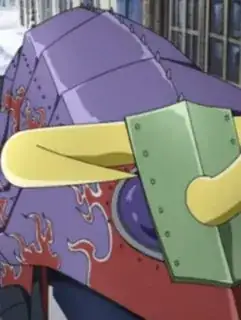In-universe explanation
The Principle of Equivalent Exchange can be understood as similar to the concept of Conservation of Mass in physics and chemistry. In other words, the elemental identity and quantity of the materials used should not change. (The degree to which this is a good comparison is ambiguous. Early chapters of FMA suggest that it is possible to transmute gold.)
Color changes may result from chemical reactions, and even different compounds consisting of the same elements may have different colors. Thus, by the same logic, the Principle of Equivalent Exchange does not preclude the possibility of color changes in transmutation, since color changes do not necessarily require an obvious addition of a source of color.
Out-of-universe explanation
The color of a car comes from paint, which has its color affected by its chemical components. Hence, it is unlikely that one can transmute paint of a certain color into that of any other color, particularly without the creation of chemical by-products from the transmutation process. (Edward's transmutation would have been messier had there been by-products.) However, color is a sufficiently superficial property that the animators did not think to worry about this detail.
